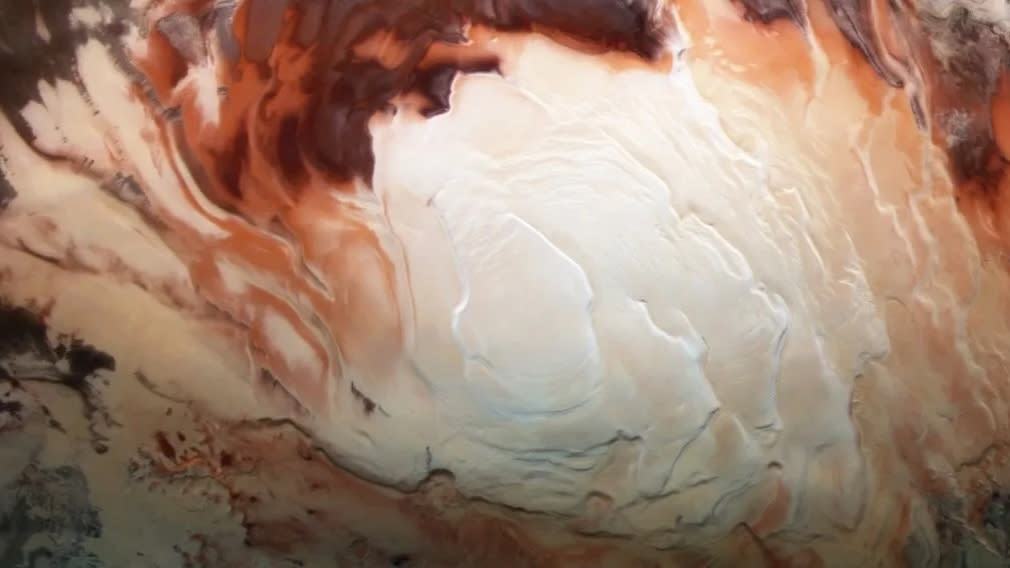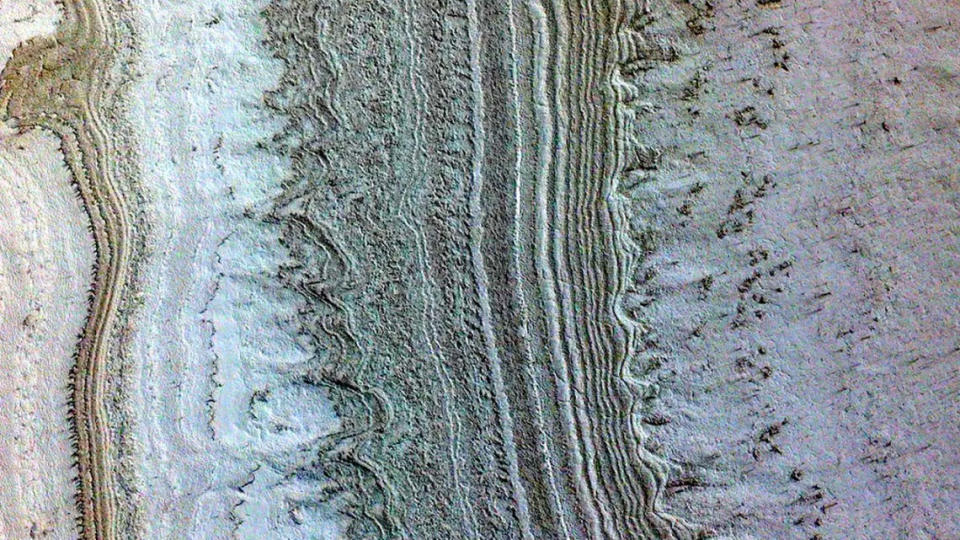Is there really a huge subsurface lake near Mars' south pole?

Doubt has been cast on the possibility of a lake of liquid water buried beneath Mars' southern ice cap by new computer simulations, which suggest that closely compacted layers of ice could produce the same radar reflections that liquid water would.
In 2018, the European Space Agency's Mars Express orbiter used its MARSIS (Mars Advanced Radar for Subsurface and Ionosphere Sounding) instrument to identify what appeared to be a 20-kilometer-wide (12.4 miles) lake of liquid water buried deep beneath 1.5 km (0.93 miles) of ice in a region called Planum Australe, in the southern polar plain on Mars. Similar evidence subsequently came to light for potentially dozens of lakes, but some are so close to the surface that it seemed impossible for water to be a liquid there.
That's because the surface of Mars is too cold and the atmospheric pressure too low to allow liquid water to persist too close to the surface. However, at the base of the south polar ice cap, the temperature and pressure conditions, with the help of a little natural antifreeze, could allow briny lakes to exist.
Related: Water on Mars: Exploration & evidence

This antifreeze could come in the form of calcium and magnesium perchlorate, which is a chemical compound that was found on the surface of Mars by NASA's Phoenix mission in 2008. Magnesium and calcium perchlorate, when dissolved in water, would lower its freezing point to a minimum of minus 68 degrees and minus 75 degrees Celsius (minus 92 and minus 103 degrees Fahrenheit) respectively — very close to the predicted temperature of minus 68 degrees C (minus 90 degrees F) at the base of the ice cap. Consequently, it's not too much of a stretch to imagine localized conditions of temperature, pressure and the concentration of perchlorate that conspire to permit large pools of liquid water on Mars.
Further evidence for such lakes came from measuring the undulations of the surface ice; liquid water lowers the amount of friction between an ice sheet and the bedrock beneath it, allowing the ice sheet to flow faster over the bedrock. This increase in flow rate results in troughs and peaks in the surface ice, which is exactly what is seen in Planum Australe.
Despite all this evidence, however, many in the planetary science community have been skeptical; the presence of liquid water on Mars would be an extraordinary find, and require extraordinary evidence. Now, a team of scientists from Cornell University have fed the flames of this skepticism with new findings that provide an alternative explanation for the radar echoes.
"I can't say it's impossible that there's liquid water down there, but we're showing that there are much simpler ways to get the same observations without having to stretch that far, using mechanisms and materials that we already know exist there," said Cornell's Daniel Lalich in a statement. Lalich is the lead author of new research that suggests compacted ice layers could return a strong radar signal that looks just like the radar echo from a layer of liquid.
A large body of water is able to reflect radar back to its source because of how flat a lake is, and on Earth bright radar reflections of the type detected by MARSIS would almost certainly mean liquid water, similar to pockets of water beneath Antarctica such as Lake Vostok. However, planetary scientists have to be wary of assuming that what is true for Earth is true for other planets, where conditions are not the same.
RELATED STORIES:
— Water on Mars carved deep gullies and left a 'great puzzle' for Red Planet history
— Water on Mars may have flowed for a billion years longer than thought
— Mars may hide oceans of water beneath its crust, study finds
Lalich's group ran thousands of simulations to test whether multiple closely compacted layers of ice could mimic the radar signal of a lake. Each simulation varied both the thickness of the ice layers and their composition (meaning, how dirty they were). They found that, in multiple instances, tightly packed layers of ice deposited long ago and crushed under the weight of the ice sheet can produce bright radar reflections just like those detected by MARSIS.
The trick is "constructive interference" of the radar waves. The spatial resolution on MARSIS is limited, and if ice layers are too thin, the radar instrument cannot distinguish them. Each layer would reflect back some of the radar beam, and because the layers are crushed so tightly together, the radar echoes overlap and combine, amplifying their strength and making them seem brighter.
"This is the first time we have a hypothesis that explains the entire population of observations below the ice cap without having to introduce anything unique or odd," said Lalich. "This result where we get bright reflections scattered all over the place is exactly what you would expect from thin-layer interference in the radar."
For now, the question of whether there is a briny lake beneath the south polar cap remains unanswered, but Lalich argues that the simulations at least provide a much simpler and, in his eyes, more probable explanation than a lake.
"The idea that there would be liquid water even somewhat near the surface would have been really exciting," said Lalich. "I just don't think it's there."
The findings of Lalich's team were published on June 7 in the journal Science Advances.

